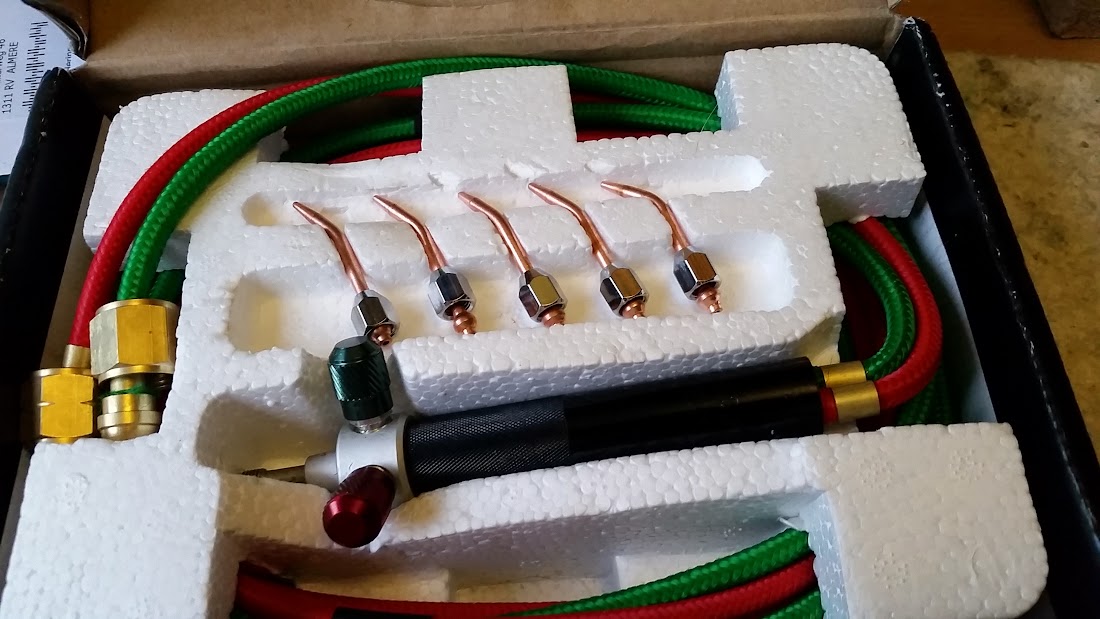
Initially, I got myself a similar small butane torch for use in my own workshop. And to be honest, it turned out to be sufficient for most soldering jobs. But as pieces grow larger, so do the requirements for the torch. So I decided on a propane/butane and oxygen torch. The torch recommended by most experts on the web is the 'Smith Little Torch'. I Chose a simple setup, with disposable gas cylinders.
I bought My Little Torch from China for US$30/ €27 including shipping (from Aliexpress).
Pressure regulators and gas bottle I bought locally.
Oxygen cylinder and regulator:
1 liter wegwerp cilinder met 100 liter zuurstof gas M10x1 (Disposable oxygen cylinder, M10x1 )
Zuurstof drukregelaar M10x1 met anti- terugslagklep t.b.v. lasbrandersets (Oxygen regulator for M10x1, with check valve)
Gas cylinder and regulator:
600ml Supergas gaspatroon 7/16" (Disposable gas cylinder, 7/16")
Gas drukregelaar 7/16" met anti- terugslagklep t.b.v. lasbrandersets (Gas regulator for 7/16", with check valve)

Total cost for the torch, regulators and gas is around €100.
I removed the original hose couplings from the torch's hoses and connected the hose directly to the gas regulators.
The pillar on the gas regulator measures 3.5mm. The pillars on the original couplings measure 4mm. This means, that the original brass ferrules can not be re-used to install the hose. The hose must be secured using a 6mm hose clamp.
The Little Torch puts out an amazingly hot flame. Certainly something that requires getting used to, so I started out soldering some coins together...
...and melting some copper wire...
...and some brass.
I Found the cost of oxygen to be quite high, so I also keep using my butane torch when possible.


































